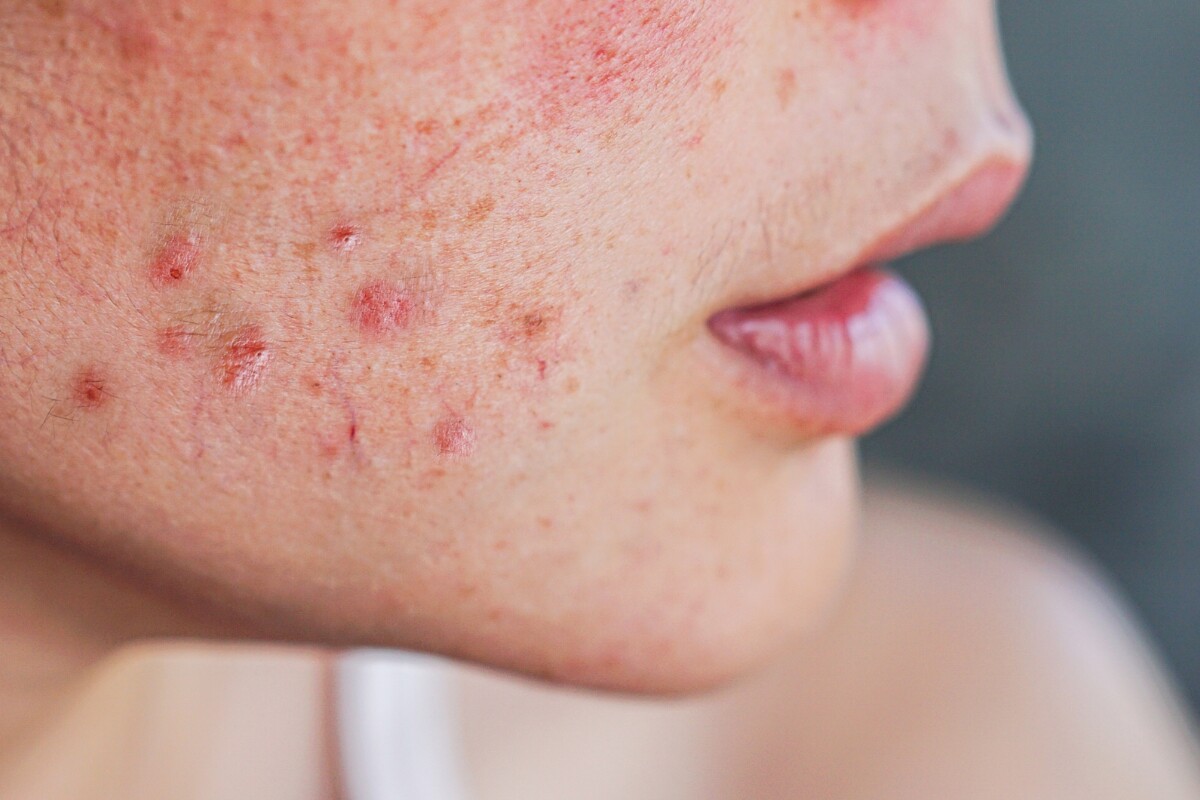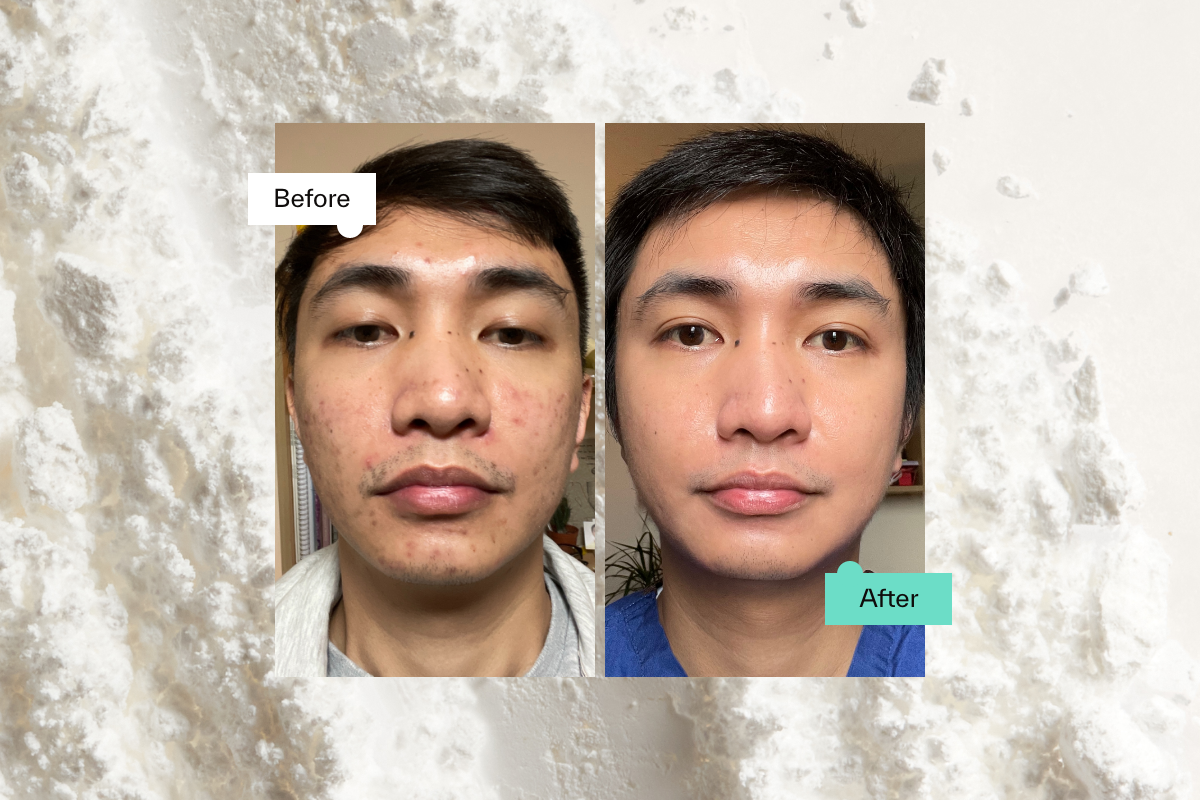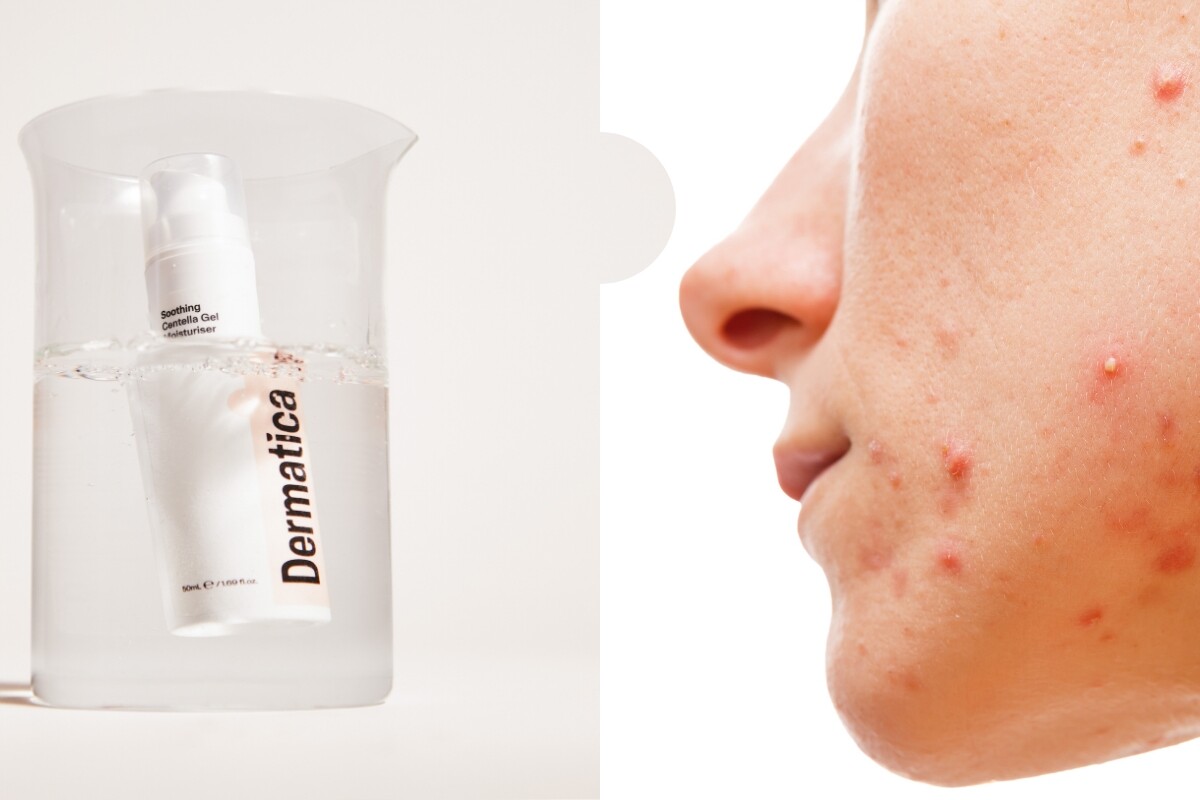Many powerful active ingredients can be applied to your skin to keep it healthy. But for persistent, severe or chronic conditions, oral antibiotics are emerging as a cutting-edge treatment. You can take them alongside your usual skincare routine to fight bacteria and reduce inflammation. Here, we explain what antibiotics are and how they can help you see even better results from your Dermatica formula.
Antibiotics: the basics
Oral antibiotics are a type of medicine you take to fight bacteria in your body. Typically they’re used to clear up infections, but they can also be used to treat skin conditions. They work by destroying the bacteria cells, stopping bacteria from replicating and blocking the production of proteins that keep bacteria alive. [1]
Tetracyclines are a class of broad-spectrum antibiotics used to treat bacterial infections and skin concerns. Examples of these are:
Doxycycline: Used to treat acne, rosacea and post-inflammatory hyperpigmentation.
Minocycline: Used to treat acne and rosacea.
Here’s how they improve chronic acne, rosacea and post-inflammatory hyperpigmentation.
Acne
Acne has many different causes, including hormonal imbalances and genetic factors. Sometimes, however, it’s caused by a bacteria known as Propionibacterium acnes (P. acnes). It thrives in your skin’s oil glands, which leads to breakouts.
Oral antibiotics fight P. acnes from inside your body. Doxycycline and minocycline are common oral antibiotics prescribed by dermatologists to treat acne. They work by reducing inflammation and killing the bacteria causing the breakouts. [2] In an internal study done by Dermatica, those who were treated with oral antibiotics and a personalised formula saw their acne improve by an extra 40% after 16 weeks compared to those who didn’t take antibiotics.
Rosacea
Rosacea is characterised by redness and visible blood vessels on the face. Though we still don’t know the exact cause of rosacea, the latest research shows that tiny mites called Demodex folliculorum, which live naturally on human skin, may possibly trigger an immune response. Fortunately, oral antibiotics can help to manage symptoms.
Doxycycline and minocycline have anti-inflammatory properties. They not only help to control the redness associated with rosacea, but also smooth out the bumps and pimples it causes. [3]
Post-inflammatory Hyperpigmentation
Acne causes inflammation. After the spot heals, the inflammation can often leave dark spots on the skin. These leftover marks are called post-inflammatory hyperpigmentation, and are caused by an overproduction of melanin.[4]
Although topical retinoids like tretinoin and adapalene have been shown to treat post-inflammatory hyperpigmentation,[5] using topical retinoids with oral antibiotics have shown even more promising results. An internal study found that participants taking oral antibiotics had over 70% less post-inflammatory hyperpigmentation after 16 weeks.
They also saw their post-inflammatory pigmentation improve by more than 50% compared to those without antibiotics.
If you have acne, rosacea or post-inflammatory hyperpigmentation, you may see results from taking oral antibiotics alongside your topical personalised formula. If you want expert dermatology advice, or to know more about our treatment options including oral antibiotics, start a consultation today.
1. Kapoor G, Saigal S, Elongavan A. Action and Resistance Mechanisms of Antibiotics: A Guide for Clinicians. Journal of Anaesthesiology Clinical Pharmacology [Internet]. 2017;33(3):300–5. Available from: https://www.ncbi.nlm.nih.gov/pmc/articles/PMC5672523/
2. Dréno B, Pécastaings S, Corvec S, Veraldi S, Khammari A, Roques C. Cutibacterium acnes (Propionibacterium acnes ) and acne vulgaris: a brief look at the latest updates. Journal of the European Academy of Dermatology and Venereology. 2018 Jun;32:5–14.
3. Lara Rivero A, Whitfeld M. An update on the treatment of rosacea. Australian Prescriber [Internet]. 2018 Feb 1;41(1):20–4. Available from: https://www.ncbi.nlm.nih.gov/pmc/articles/PMC5828925/
4. Lawrence E, Al Aboud KM. Postinflammatory Hyperpigmentation [Internet]. PubMed. Treasure Island (FL): StatPearls Publishing; 2023 [cited 2023 Jun 12]. Available from: https://www.ncbi.nlm.nih.gov/books/NBK559150/
5. Davis EC, Callender VD. Postinflammatory hyperpigmentation: a review of the epidemiology, clinical features, and treatment options in skin of color. The Journal of clinical and aesthetic dermatology [Internet]. 2010;3(7):20–31. Available from: https://www.ncbi.nlm.nih.gov/pmc/articles/PMC2921758/
Ash Sharma
Dr Ashwin Sharma is a medical doctor and writer with a particular interest in health technology, artificial intelligence and medical weight loss. He completed his training at the University of Leicester and Imperial College London, and has since been exploring the intersections of medicine, technology, and communication.





